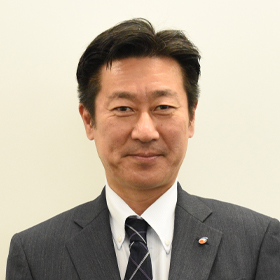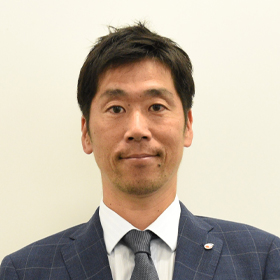2023.08.24

PSM fulfills its mission in the 3.5 km-long river improvement project for greater flood control
P.S. Mitsubishi Construction (PSM) is Japan’s largest general construction company in the
field of prestressed concrete construction, a construction method known for its strong
performance in terms of structural strength and durability. Having undertaken many projects
using the related technology, the company has a stellar track record of delivering various
public works projects for recovery and reconstruction from the Great East Japan Earthquake ,
providing measures against catastrophic natural disasters and promoting the national
resiliency improvement policy focusing on deteriorating infrastructure.
PSM is currently engaged in a regional disaster resilience project in Iwate Prefecture. In
August 2016, Iwaizumi Town in the northeastern part of the prefecture was hit by Typhoon No.
10 (Lionrock), resulting in the largest flood flows on record and the flooding of the Omoto
and Shizu rivers, two major waterways running through the town. The massive flood brought
grave damage to the region, claiming a total of 29 victims, including both fatalities and
missing persons, and submerge large areas of the basin, where flooting occurred to 723
houses above floor level and 121 houses below floor level.
In this project, PSM has won a contract for river improvement for the designated disaster
zone, a section of the river spanning around 3.5 km, with the aim of preventing river
flooding even in an event with similarly intense rainfall levels. The project plan is
composed primarily of the dredging and excavation of river channels to expand the water
discharge capacity along with a number of other processes, such as downstream extension of
the revetment, embankment elevation, and bridge replacement.
PSM’s Civil Engineering Group Leader Kazuya Saito described the company’s distinctive
strength derived from “capabilities to undertake large-scale construction projects as a
single package.”
“We put in a bid for the river improvement project, which involves the demolition of
affected bridges and bridge replacement in response to changes in the river width, and won
contracts for three bridge superstructure/substructure works and one bridge substructure
work,” Mr. Saito explained. “Backed by a myriad of experience and reliable methods, we were
able to receive orders for both bridge demolition and construction. With this advantage, we
can undertake the whole bridge construction project including superstructure and
substructure works under a single package contract. This saves clients from having to place
separate orders.”
Committed to realizing desire of local residents to remain in their town
Deputy Civil Engineering Division Head Hitoshi Suzuki explained the difficulties involved
with the disaster resilience projects. “Usually, an invitation to bid for river improvement
contracts is published when necessary preparations have been made to acquire land and to
decide construction methods, a key prerequisite to smooth progress according to the client’s
plan,” Mr. Suzuki noted. “ Meanwhile, in the case of disaster resilience projects, an
invitation for bid is announced immediately after the occurrence of the disaster, when the
land is quite often yet to be acquired and construction methods are yet to be decided. This
situation often hampers prompt and efficient implementation of work plans.”
He continued: “For example, a delay in land acquisition can result in compromised
efficiency, specifically by popularizing the initial plan to start from the downstream side
and forcing the construction to start from a less favorablre point. Also, construction
methods and areas are constantly changing, depending on the situation. In addition, for land
purchasing plans, consideration needs to be given not only for construction areas but also
for logistics roads. Disaster resilience project contractors need to have expertise and
technical capabilities to respond to such challenging issues with flexibility and must work
closely with the client to achieve smooth progress with the project.”
River improvement projects require high levels of skills in order to effectively handle an
array of environmental conditions related to river flow velocity, depth, embankment height,
and other factors. At the same time, consideration should be given to building structures
located in the river basin, such as schools, municipal offices, and commercial facilities,
which may pose a major issue. In response to all these challenges and issues, PSM was able
to offer appropriate advice to its clients.
“River improvement works may themselves face risks of sustaining disaster-related damage, as
exemplified by the events occurring in August 2022, when the Omoto River running through
Iwaizumi Town rose to a dangerous level,” noted Suzuki. “We are thus working on the project
with the utmost care and attention so as to minimize possible damage while also being
committed to realizing the local residents wish to continue to remain in their hometown,
where they have lived for a long time and which has recovered from the disaster. Bearing
firmly in mind our mission to increase the safety of local public infrastructure, we are
striving to deliver the project as soon as possible.”
The improvement project for the Omoto River and Shizu River is scheduled to be completed in
2027.
INTERVIEWEE

JIN SUZUKI
Deputy Civil Engineering Division Head

KAZUYA SAITO
Civil Engineering Group Leader
P.S. Mitsubishi Construction Co., Ltd.
Tokyo Shiodome Building 18F, 1-9-1, Higashishinbashi, Minato-ku, Tokyo
Founded in 1952, the company has established itself as a pioneer in the field of
prestressed concrete technology in Japan, and has undertaken various construction
works for numerous civil engineering and building projects. The company provides
integrated services for the entire life cycle of a structure, spanning a range of
processes from planning and design to construction and maintenance. Committed to
developing technology to improve seismic performance and extend the life of
structures, it aims to protect life in the event of a disaster while at the same
time building resilient social capital, the key to economic development.
